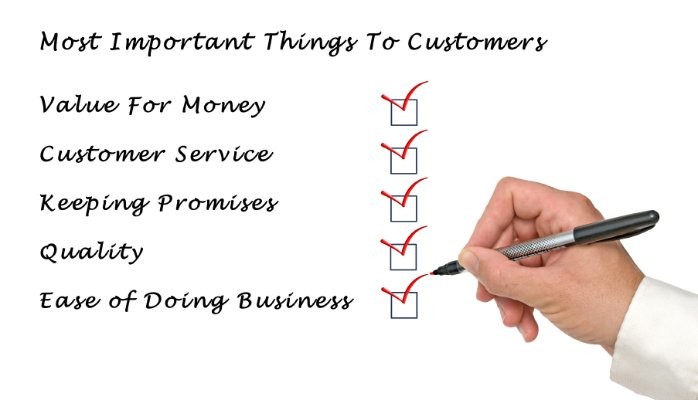
"Price is what you pay. Value is what you get."
For a customer experience to be frictionless, it must be reliable, relevant, valuable and trustable. Reliability and relevance are basically just “product competence” and “customer competence.” Does the marketer have the competence to deliver a product that meets the customer’s need without problems (reliability)? And does the marketer have the competence to align its offering and communication with this particular customer’s own attributes or situation (relevance)?
But as Warren Buffett once said, “Price is what you pay. Value is what you get.” The price of a customer experience may be measured in dollars and cents, but its value is based on its context -- both to the customer and to the company.
For a customer experience to be valuable, it must be perceived as a fair trade for the customer. That is, the price the customer pays must be no more than the value the customer expects to receive. And of course every customer has his or her own opinion as to the value of whatever product or service you’re selling, which is related to its reliability and relevance. An unreliable or irrelevant customer experience will have that much less value to the customer.
Ironically, however, when a business increases its focus on improving the value of the customer experience it delivers, it can often reduce its own costs, as well. Because eliminating friction will not just raise the value of an experience to the customer, it will also reduce the company's cost of delivering that experience.
In a previous post, I mentioned how these cost reductions can often help a company justify and pay for improving the quality of customer experience it delivers. And this is exactly what happened when one of our clients, a $20 billion company in the telecom business, began focusing on how to eliminate friction. Over a three-year period the company was able to document nearly $2 billion in unnecessary process costs, which generated an estimated $3 billion in added revenue. So the friction-eliminating initiative clearly paid for itself.
At the same time, however, this company also saw a significant increase in its average level of customer satisfaction, so the initiative also increased the value of the customer experience.
In physics, friction is the heat waste that impedes any closed system, and the measure of friction is entropy, or randomness. You could think of friction as the opposite of order. As friction increases, order declines.
When you're delivering a customer experience, friction is the extra effort that impedes your customer from meeting his or her need efficiently. You could think of this kind of friction as economic waste. And as friction increases, value declines.
Mission Crédit Agricole Finistère / Top 10 influenceur francophone du #CES2024
9yhttps://www.youtube.com/watch?v=JZkFeiNpKe4 This is an hilarious video ( 3 minutes ) about price and value for those who speak french
Vice President- Operations & Business Strategy
9yThe Value- Another cool description- iWatch is not just a WATCH to watch the Time but also to WATCH what all you can WATCH on an iWatch.........
💊 #DrSales / 𝕁𝕖 𝕧𝕒𝕚𝕤 𝕧𝕠𝕦𝕤 𝕗𝕒𝕚𝕣𝕖 ❤️𝔸𝕀𝕄𝔼ℝ ❤️ 𝕝𝕒 𝕍𝔼ℕ𝕋𝔼🤝 ! 🎓Formations 🧑🏼💻Webinaires 🎙️Conférences 🧢Coaching 📈 Consultance 📺 vidéos YouTube
9ySo, friction is a cost ! Great insight ! Thanks for it.
Global VP & General Manager | Executive MBA | Channel Sales and GTM Leader with global experience and international mindset | Currently based in Europe | Follow me for news on Technology, Cybersecurity, Generative AI
9yIt would be great to know if, when the value to the customer increased, you were able to charge a higher prices as well...? ;)